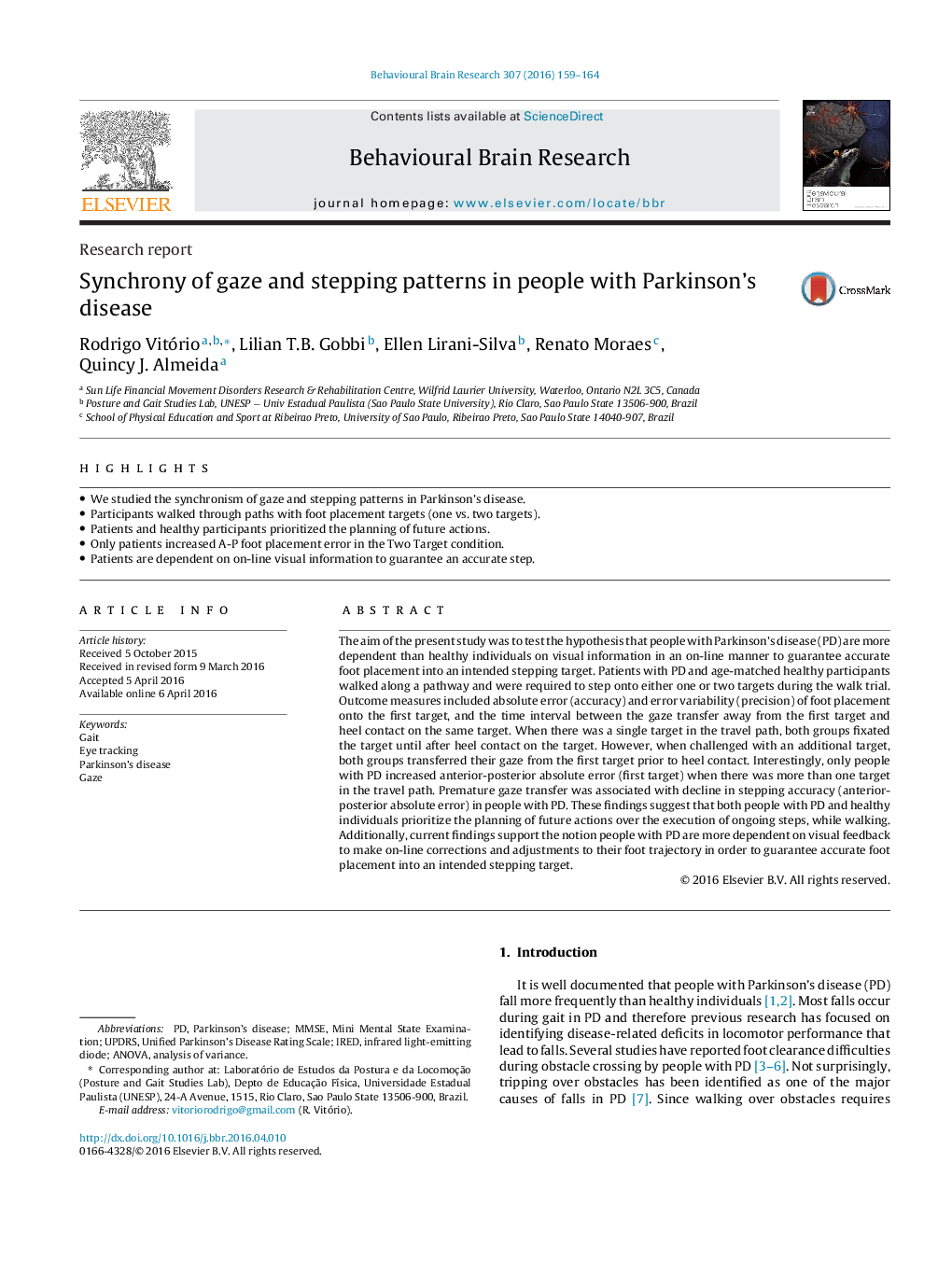| کد مقاله | کد نشریه | سال انتشار | مقاله انگلیسی | نسخه تمام متن |
|---|---|---|---|---|
| 4312264 | 1612926 | 2016 | 6 صفحه PDF | دانلود رایگان |
• We studied the synchronism of gaze and stepping patterns in Parkinson’s disease.
• Participants walked through paths with foot placement targets (one vs. two targets).
• Patients and healthy participants prioritized the planning of future actions.
• Only patients increased A-P foot placement error in the Two Target condition.
• Patients are dependent on on-line visual information to guarantee an accurate step.
The aim of the present study was to test the hypothesis that people with Parkinson’s disease (PD) are more dependent than healthy individuals on visual information in an on-line manner to guarantee accurate foot placement into an intended stepping target. Patients with PD and age-matched healthy participants walked along a pathway and were required to step onto either one or two targets during the walk trial. Outcome measures included absolute error (accuracy) and error variability (precision) of foot placement onto the first target, and the time interval between the gaze transfer away from the first target and heel contact on the same target. When there was a single target in the travel path, both groups fixated the target until after heel contact on the target. However, when challenged with an additional target, both groups transferred their gaze from the first target prior to heel contact. Interestingly, only people with PD increased anterior-posterior absolute error (first target) when there was more than one target in the travel path. Premature gaze transfer was associated with decline in stepping accuracy (anterior-posterior absolute error) in people with PD. These findings suggest that both people with PD and healthy individuals prioritize the planning of future actions over the execution of ongoing steps, while walking. Additionally, current findings support the notion people with PD are more dependent on visual feedback to make on-line corrections and adjustments to their foot trajectory in order to guarantee accurate foot placement into an intended stepping target.
Journal: Behavioural Brain Research - Volume 307, 1 July 2016, Pages 159–164
